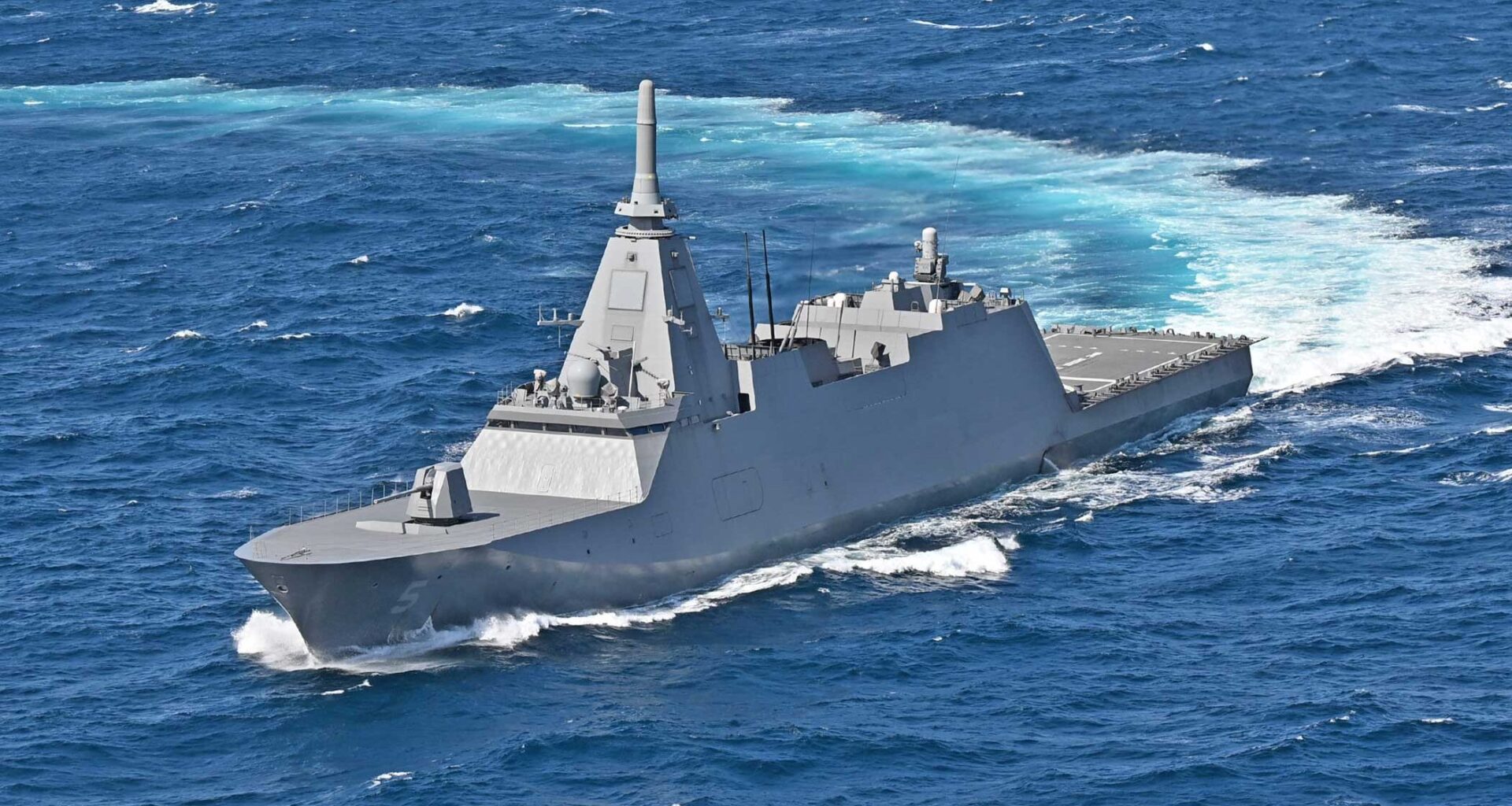MELBOURNE — Australia’s selection of Japan’s improved Mogami-class frigate is a testament to Japan’s record of continuous shipbuilding and will further strengthen the capabilities of the country’s defense industry, according to the Japanese defense minister.
Speaking on Tuesday at the regular press conference following the weekly cabinet meeting, Gen Nakatani said that the quality of design of the frigate played a part in the Australian decision to acquire it.
“They are truly state-of-the-art warships that bring together the outstanding technological capabilities of Japan’s defense industry,” said Nakatani, adding that “Japan’s production capacity for naval vessels, and our long history of continuous production … has been a major factor [in the selection].”
Nakatani also said that the Australian decision marks a major step in further elevating security cooperation between the two countries.
“Japan and Australia are special strategic partners, and this was a major step toward further enhancing security cooperation with Australia,” he said.
The first three of an eventual 11 frigates for the Royal Australian Navy will be built in Japan by Mitsubishi Heavy Industries in Japan, with the remainder to be built in Australia at the Henderson Defence Precinct in the state of Western Australia.
Nakatani said that a final agreement for the transfer of production to Australia is expected to be concluded by 2026, and the effort to transfer the construction of eight frigates to Australia would be an opportunity strengthen Japan’s defense industry.
However, analysts Breaking Defense spoke to said that a few risks remain for the program, with Japan’s defense industry lacking experience in foreign exports and transferring production offshore, given that this is Japan’s first major defense export success.
Collin Koh, a senior fellow and coordinator of maritime affairs at Singapore’s S. Rajaratnam School of International Studies, told Breaking Defense that Japan’s naval shipbuilding industry is considered one of Asia’s and the world’s most advanced and productive, noting that it has constructed a steady stream of vessels for the Japan Maritime Self-Defense Force (JMSDF).
“This isn’t limited to just surface ships, but submarines and fleet auxiliaries too. The Mogami class has been steadily introduced over the years since the first ship was commissioned, attesting to Japan’s naval shipbuilding efficiency,” he said.
He cautioned, however, that it has only been building naval vessels for the JMSDF thus far, and the lack of experience with an export order could give rise to concerns about its ability to complete the program without hiccups.
Australian naval analyst Alex Luck said that the Australian shipyards will need to be expanded to handle the work with two other shipbuilding programs, for Australian medium and large landing ships, already underway at the facility.
He told Breaking Defense that the shipyards in western Australia have also not handled a project of such complexity before, with recent major Australian naval construction having taken place at different yards in southern Australia.
Luck further noted that Australia does not have a good record of naval shipbuilding projects, with previous builds saddled with delays and cost overruns and warned that a domestic build in Australia is almost certain to lead to cost increases.
“This will likely attract further scrutiny, and in combination with a significant potential for delays this will put the overall acquisition strategy into question and possibly contribute to incentives getting more hulls from [Japan.]”

